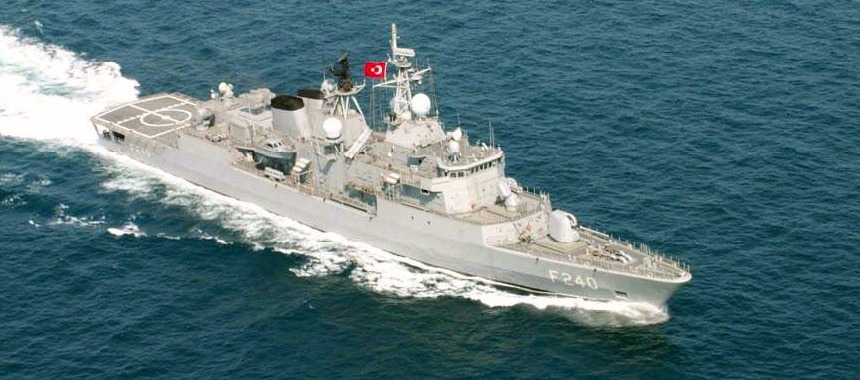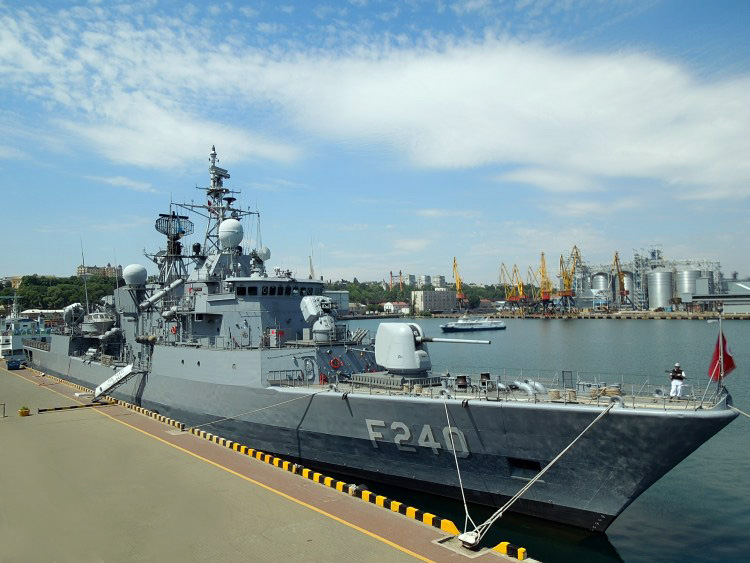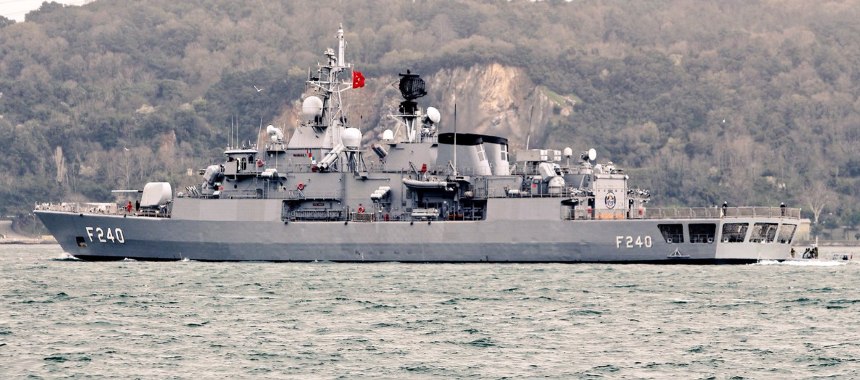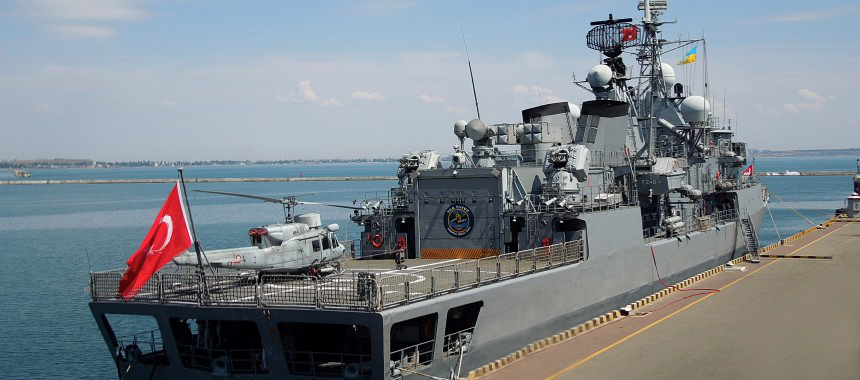Frigate of the Turkish Navy TCG Yavuz

The ‘Yavuz’ cruiser is the first ship named after the Ottoman Sultan, Yavuz Selim. The German Navy ordered the ship to ‘Blohm&Voss shipyard’ and keel laid down in August 1909 and launched on 28 March 1911 as SMS Goeben. She served in Germen Imperial Navy until August 1914.
In a period, when outbreak of Germen-French all out war is anticipated, the ship Goeben tasked to conduct bombardment against Filipovil Harbor to interdict French supply convoys. Following the successful mission, under the pressure of opposing naval units in operational area, the ship Goeben sought asylum in then, neutral Ottoman Empire’s territorial waters as passing through Çanakkale Strait.
In the political setting of the days, prior to start of World War I, Ottoman Empire declared to all parties that the ship ‘Goeben’ purchased from Germany and commissioned as Ottoman cruiser and named ‘Yavuz’. The ship was equipped with 3x28 cm main turrets and 15 cm side guns, had displacement of 28.000 tones with a maximum speed of 28 knots.
The ship Yavuz proudly served both in Ottoman and Turkish navies for long years, and had great influence on foreign policy. As the symbol of strength and deterrence, the ship Yavuz accomplished many missions successfully during World War I.
The ship was the striking unit of the navy and also played flag ship role provided support to other units and conducted raids to enemy shores and maintained the security of the vital sea lines of communication. During her operations, many ships are sunk by her fire, and she became the nightmare of the enemy.
The ship was taken out of service in compliance with Mondros treaty at the end of World War I. After the foundation of Turkish Republic, the ship was reactivated and served in Turkish Navy. During her second activation, the ship participated in many exercises, visited many foreign ports and proudly carried Turkish flag.
The ship ‘Yavuz’ also transported the body of the founder of the Turkish Republic, Mustafa Kemal Atatürk, from Istanbul to Izmit during his funeral. The ship decommissioned after a long honorable and proud service life in 1954 and her name engraved to golden pages of the Turkish Naval History.
 The ship TCG Yavuz (F240)
The ship TCG Yavuz (F240)
'Yavuz' is the first ship in a series of four class frigates MEKO 200-T. This ships construction program developed to increase Türkiye’s naval strength to fulfill national and NATO commitments. The ship 'TCG Yavuz' has been designed commitments ‘Blohm&Voss’ shipbuilding company in Hamburg, Germany.
The ship Yavuz is a versatile, multi-purpose frigate and fully able to operate with equal effectiveness alone, or with in a task force.
The ship 'TCG Yavuz' was designed primarily for surface warfare and has the most advanced detection and fire control systems yet developed. The ship is also an outstanding platform for; Anti-Air Warfare (AAW) against air targets, Missiles (SAM and SSM ) Anti-Submarine Warfare (ASW) Electronic Warfare (EW) (ASW).
 The frigate TCG Yavuz
The frigate TCG Yavuz
The ship 'TCG Yavuz' is the first fully automated command control combatant ship in the Turkish Navy. The frigate is powered with four MTU Diesel Engines and these engines produce more than 10.000 horsepower each to drive the ship at a maximum speed of 27 knots. The twin controllable, reversible pitch propellers, give the ship an exceptional degree of maneuverability. The sensors of the ship, with their higher power and improved signal processing equipment, are the first in the Navy to be linked directly to digital computers, thus ensuring swift, accurate processing of target information.
 Frigate of the Turkish Navy TCG Yavuz
Frigate of the Turkish Navy TCG Yavuz
The armament aboard the ship 'TCG Yavuz' gives her the best surface warfare and Naval Gun Support capability with her Sea Sparrow missiles and Sea Guard Close in Weapon System; the best ASW capability with her MK-46 torpedo and on board AB-212 SW Helicopter; the best long-range engagement capability against surface targets engagement capability against surface targets with her Harpoon SSM system, along with an electronic warfare.
The frigate TCG Yavuz (F240) general characteristics:
- Displacement — 2,995 tons
- Length — 111 m
- Beam — 14.25 m
- Propulsion — 4 Diesel MTU 20 V
- Range — 4,979 nautical miles
- Speed — 27 knots
- Complement — 200 officers and enlisted.
Armament:
- Main gun — 5/54 Mk 45 MOD 1
- SSM — Harpoon
- SAM — Sea Sparrow
- Weapon SYS — 25 mm Sea Zenith
- Torpedo — Mk 44/Mk46 MOD 5
- Helicopter — 1.
- Comments
 en
en ru
ru uk
uk




